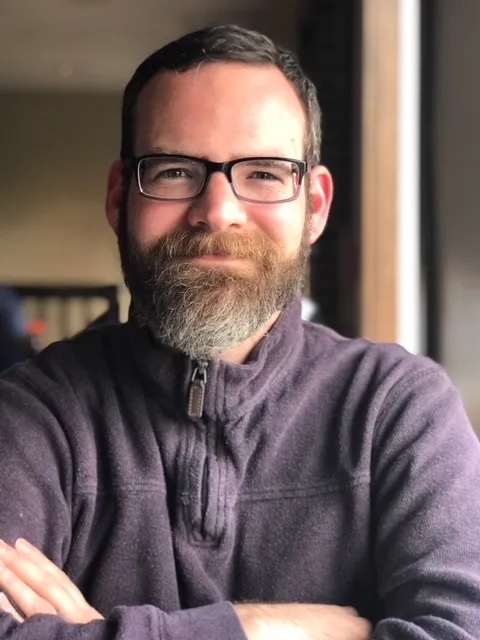This post is written by Jason D. DeHart, PhD. Read more about Jason at the bottom of this post.
Were I to conduct a thematic analysis of my career in literacy so far, “I don’t like to read” would rise to prominence as an often-stated reality. Even if students feel that they are capable readers, they do not always express connection and engagement with the texts that they encounter in school settings.
This was true in my time as a middle school teacher, it is a theme that has inspired my scholarship, and it is a mantra that continues to resonate in the K-12 setting in which I am working now. When I consider the types of texts that continue to be honored – voices from hundreds of years ago, many of which include problematic language related to ethnic, racial, and gender identities – it is no small wonder that instant buy-in is so rare.
While there are many potential solutions to discuss, the word that also comes to mind in my thematic thinking is linking. This notion of linking speaks directly to the work of Literacy in the Disciplines in terms of thinking about the strands of critical inquiry that can be fashioned between and among content areas and types of texts. As I start a new semester, I am continuing to revisit the ways I can make content rich and relevant for my students through thoughtful connections between and among content areas, types of texts, and voices old and new.
The Rising Voices
Text selection is a key part of this process. When I first began teaching my students, they were reading Steinbeck’s outsider report of migrant farm workers in Of Mice and Men. That same year, in 1937, a book called Their Eyes Were Watching God was published. I was fascinating by this cultural dichotomy and struck by the opportunity to find a voice from the intersections of gender and ethnicity that could broaden my students’ perspectives about the lived experiences of people in the past. Zora Neale Hurston was, famously, an anthropologist, and her attention to ethnographic detail shows up in her writing.
I then worked with students across my courses to trace this literary journey to Alice Walker, who was instrumental in bringing attention once more to Zora Neale Hurston’s work in more recent times. This conversation between authors across time was one that I could discover and share with my students, linking to their current stories as part of American culture(s). It is both a linking of time and a critical inquiry that travels through a chain of inspiration.
In addition to Hurston and Walker, we read Jason Reynolds, Jericho Brown, and additional contemporary voices who have shared about facets of America that are simply not discussed in many canonical works. It is also important to me to choose works not simply because I am drawn to them personally, but as a way of filling in a gap that exists in what students might have discovered in literature so far.
Critical Analysis and Honest Stance
At one time, suggesting that a revered work of literature contains problematic content would have caused me insecurity. I desperately wanted to be a “good English teacher”, and I thought that meant holding the classics up on clouds. At this point in my teaching career, I recognize the value of honestly evaluating the limitations of thought and experience represented by literary canonical figures. In this way, I can be clearly critical about what it means to be an inside or outside voice related to a particular topic or way of being, and I can invite my students to think critically about these questions of authorship, as well.
I feel that this approach honors my students’ intelligence and acumen in noting these inconsistencies in human stories, as well as their awareness of the absence of some stories in what they have discovered in curriculum so far. This critical stance is not only possible in English class, but can lead to inquiry in history and social studies courses, discussions of equity and equal access in science and health care, and questions of ethics in technology courses, to note a few possibilities.
Asking students to evaluate an author biographically, not to simply suggest that they did not know better than to use language at a certain period in time, but to consider authors’ biases and positionalities is part of deep thinking and ethical work. This need not be a full lecture on the author’s history, but rather a point-by-point glimpse at some major details about them, considered historically alongside literature.
Ways of Reflecting
Finally, all of this critical work requires some kind of outlet. I cannot imagine teaching a class about virtually any topic and not having my students respond in some way each day, either in a paragraph, a sentence, or a few take-away words. I embrace videoed content as students have created zeitgeist poems and adapted key narrative scenes in groups, using their cell phones as one-stop shops for moviemaking. I embrace the visual, not just in thinking about remembering vocabulary words, but in sharing multimodally and symbolically about reading and viewing experiences.
A question stem to encourage this kind of response might be something like: Locate or create three images that represent your thinking about the representation of political unrest in Before We Were Free by Julia Alvarez, or Create an infographic to help us understand the setting and context of Elie Wiesel’s Night.
In this way, students can explore links between and among stories that have existed for some time, as well as those that need to be (re)told. Moreover, as I have explored in this post, students can become aware of, critique, and even compose links between historical and contemporary voices, and engage in the process using tools and approaches that build their mathematical, artistic, and technological skills.
Teaching and learning is truly a linking and connected process, from past to present and across multiple literacies. All of this rich complexity requires attention, but I have found the conversation to be worth the time.

Jason D. DeHart is a passionate educator, currently teaching English at Wilkes Central High School in Wilkesboro, North Carolina. He served as a middle grades English teacher for eight years and an assistant professor of reading education at Appalachian State University from 2019 to 2022. DeHart earned his PhD from The University of Tennessee, Knoxville.
Photo by Michal Matlon on Unsplash
